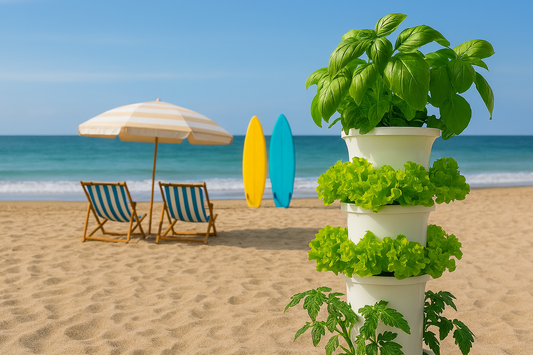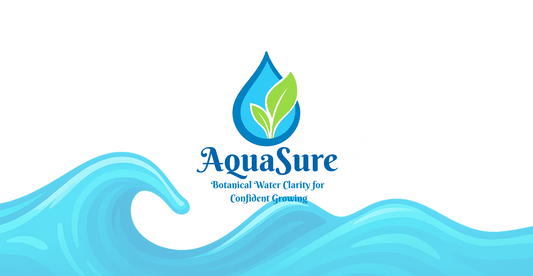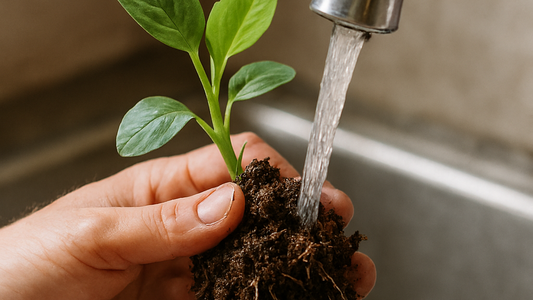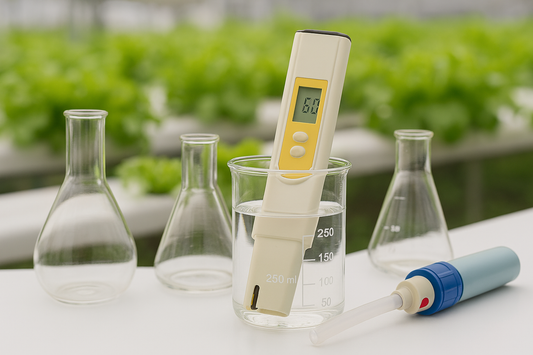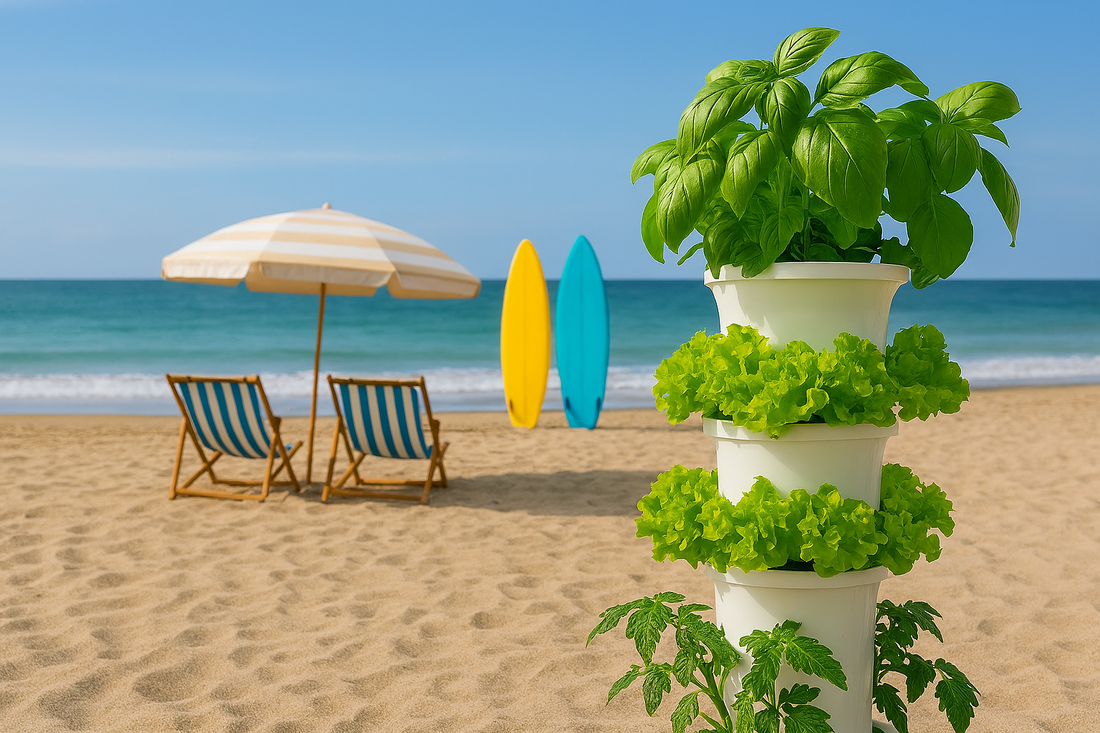
Vacay Mode - How to Prepare Your System for Time Away
Traveling When You Have a Hydroponic System
Even the most dedicated growers need to step away sometimes—whether it’s for a weekend recharge or a full-blown vacation. The good news? You don’t have to shut down your hydroponic system or risk coming home to wilted plants. With a few smart adjustments, you can shift your system into vacation mode—a temporary state that slows growth without compromising plant health.
Our goal here is simple: reduce metabolic demand while maintaining hydration and root stability. That means dialing back light and nutrients just enough to pause aggressive growth, while keeping your system clean, balanced, and alive.
Keep Watering Consistent
Water is the lifeblood of your system. Even if we’re slowing down photosynthesis, roots still need hydration to maintain osmotic balance and prevent stress. Cutting water too aggressively can lead to root damage, salt buildup, or even system failure.
- Maintain your regular watering schedule—especially if your system uses timed irrigation.
- Check reservoir levels before leaving and top off with clean, filtered water if needed.
- Consider adding a float valve or auto-top-off system if you’ll be gone more than a few days.
Reduce Light Duration and Intensity
Light drives photosynthesis, which drives growth. By reducing light exposure, we slow metabolic activity and nutrient uptake. This helps your plants “coast” while you’re away, without triggering stress responses.
- Shift your light schedule from 14 hours to 12 hours (e.g., 06:00–18:00).
- Use full boost (100%) for 4 hours midday (e.g., 10:00–14:00) to maintain core photosynthesis.
- Use 75% intensity for the remaining 8 hours, and optionally drop to 50% for the first and last hour to simulate sunrise/sunset.
- If your system allows scheduling presets, save this as a “Vacation Mode” profile.
Adjust Nutrient Concentration
With reduced light and slower growth, plants won’t need as much nutrition. Overfeeding during low metabolic periods can lead to salt buildup and pH instability. A slight taper keeps the root zone clean and balanced.
- Reduce nutrient concentration by 10–15% during vacation mode.
- Use your EC meter to verify target ranges—don’t rely on ppm alone.
- Flush the system with clean water before leaving if you’ve recently added nutrients.
Manage Temperature and Airflow
Environmental conditions can amplify or suppress plant activity. Cooler temps naturally slow growth, while heat can accelerate it. Airflow helps prevent mold and keeps the root zone oxygenated.
- Ensure passive airflow or fans are running on a timer.
- If ambient temps are high, consider shading or cooling the grow area.
- Don’t seal the system completely—plants still need gas exchange.
Prune Strategically
Pruning before you leave can reduce transpiration and nutrient demand. It also helps prevent overcrowding and keeps your system tidy while you’re away.
- Lightly prune fast growers like basil, mint, or leafy greens.
- For fruiting crops like tomatoes and chillies, remove suckers or excess foliage—but avoid heavy pruning.
- Dispose of pruned material properly to avoid rot or contamination.
Final Checks Before You Go
Think of this like a pre-flight checklist. A few minutes of prep can save days of recovery later.
- Top off your reservoir and verify pH and EC levels.
- Clean filters, check pump function, and confirm timers are working.
- Leave a note or guide for anyone checking in on your system.
Bottom line: Your hydroponic system doesn’t need to pause just because you do. With thoughtful adjustments, you can slow growth, preserve health, and return to thriving plants. Vacation mode isn’t about survival—it’s about smart stewardship. Your plants will thank you for it.
